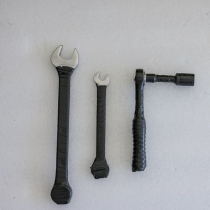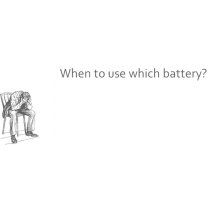Across all markets over recent years Lithium-ion batteries have been gaining in traction [sic]. To the uninitiated it is easy to dismiss Lithium-ion as an expensive alternative to VRLA (valve regulated lead acid) technologies such as AGM (absorbed glass mat), if simply looking at the amp-hour (Ah) rati
Blog
Serial-parallel correct connection of battery cells.
We certainly do not recommend connecting two „strings“ together at the high DC level. The LiFePO4 cells have very small internal resistance and connecting cells at high level voltage (e.g. one pack is 53V, the other pack is just 48V) will cause extreme currents that may cause damage to the ce
An Undocumented Black-Box or an Open Solution?
GWL/Poweris working on open and modular solutions for the DC power systems and energy storage projects. We believe our partners and friends appreciate the advantages of the fully open and modular solutions. In our understating aBlack-Boxis a product or an equipment that is sold “as
Safety of work when installing batteries
We use insulated tools when working with the battery.
Always secure hand tools to avoid short-circuiting the battery in the event of careless handling or accident.
An unwanted short circuit when installing the battery is the most common cause of cell damage.
An example ofself-made insulated tools can be
Starting with LYP/LFP cells from Winston Battery - 13 steps
Quick tutorial video how to start with the LFP (LYP) cells. Learn and see the 13 steps. See how to make the first check-up and the initial charging. About Winston cells: Large capacity LiFePO4 prismatic cells. Thundersky – Winston Battery famous yellow cells. More than 18 years on the mar
BU-808b: What Causes Li-ion to Die?
Learn what‘s behind the aging process of Li-ion The ultimate focus of maximizing the energy density of Li-ion shifted in 2006 when Li-ion unexpectedly disassembled in consumer products and millions of packs were recalled. Safety gained attention and batteries became safer. With the advent of th
BU-304a: Safety Concerns with Li-ion
Safety of lithium-based batteries has attracted much media and legal attention. Any energy storage device carries a risk, as demonstrated in the 1800s when steam engines exploded and people got hurt. Carrying highly flammable gasoline in car
What’s inside an 18650 cell? And why its important
There has been a boom in ebike builders making their own battery packs out of the popular 18650-format cells (18mm diameter, 65mm long), and I want to share what I’ve found out about the guts of an 18650, so you will understand more about proper DIY pack-building methods.
Why would someb
BU-205: Types of Lithium-ion
Become familiar with the many different types of lithium-ion batteries.
Lithium-ion is named for its active materials; the words are either written in full or shortened by their chemical symbols. A series of letters and numbers strung together can be hard to remember and even harder to pronounce, and b
Characteristics of Lead Acid Batteries
For most renewable energy systems, the most important battery characteristics are the battery lifetime, the depth of discharge and the maintenance requirements of the battery. This set of parameters and their inter-relationship with charging regimes, temperature and age are described below.
Depth of discharge and

 English
English Česká republika
Česká republika Germany
Germany France
France España
España Italia
Italia Sverige
Sverige Polski
Polski Nederland
Nederland



.jpg)










